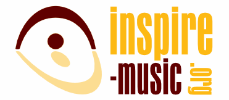A musical community where pupils are encouraged to follow and develop their creative energies
What are the goals of the work?
How does it fit into the ethos of the school/setting?
At Rhyl Primary School, Camden, London, there is an expressed belief that 'every child must be nurtured, valued and empowered to have the highest aspirations for their future and to reach their full potential through the provision of a stimulating, innovative and creative curriculum.' ( http://www.rhylprim.camden.sch.uk )
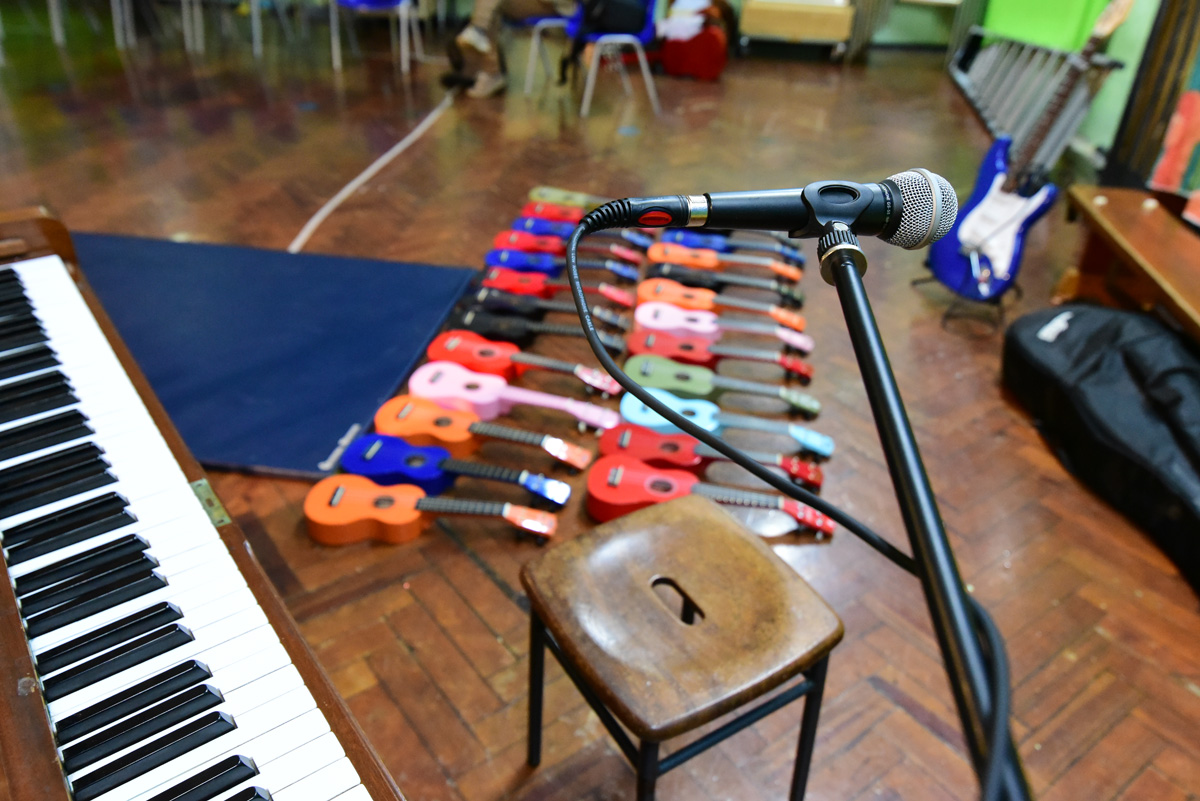
How does it fit into the learning strategy of the school/setting?
Music is taught in line with the school's Learning and Teaching policy () and aims to:
- Raise achievement through a commitment to high standards and expectations;
- Enable every child to succeed as an independent, enthusiastic and confident learner;
- Provide active, co-operative and independent learning through dynamic and high quality teaching;
- Create an atmosphere where each child is valued as an individual, enabling them to develop a positive self-image, self discipline and respect for others;
- Ensure equality of opportunity at all times, so that each child is given appropriate support and enrichment;
- Create an inclusive learning community which challenges and enables every learner to flourish, prosper and develop aspirations for a successful future;
- Provide a welcoming, secure, stimulating and enriched learning environment;
- Provide an innovative, creative and integrated curriculum which inspires and motivates children to learn and which takes account of different learning styles; and
- Celebrate our rich diversity and work in partnership with parents, children and the wider community.
The Learning and Teaching Policy 'Curriculum Design' states:
According to the school website, Rhyl is committed to providing a broad and balanced curriculum whilst seeking to guarantee that this meets the demands of the National Curriculum and the 'Curriculum Guidance for the Early Years Foundation Stage'. Emphasis is placed on exploring cross-curricular links to provide and enrich a creative and meaningful curriculum, where the official philosophy is for children to be active, independent and motivated learners. The curriculum has been planned to enable such links to be developed and exploited. There is also great value placed on the development of children as individuals. Social, moral and emotional issues are given a high profile in both planning and delivery.' (http://fluencycontent2-schoolwebsite.netdna-ssl.com/FileCluster/RhylPrimary/Mainfolder/Policies/Updated-Policies-2016/Learning-teaching-policy-Feb-2016.pdf)
How does it fit into the curriculum of the school/setting?
EXPRESSIVE ARTS CURRICULUM STATEMENT
The school's public policy statements suggest that there is a strong belief that 'the Arts subjects (music, drama, dance, art) are just as important as Academic. We have a creative curriculum where the Arts subjects are incorporated into every day teaching. We believe that this helps children to gain a greater understanding of what they are learning encouraging key skills, whilst harnessing and encouraging creativity.'
'We ensure that the pupils have a voice and contribution to make towards their learning. We take on board ideas and suggestions from the children. This ranges from designs for our Pavilion and Recording Studio that have been built, to songs to be performed and recorded by our many Rock Bands and other ensemble groups. This promotes inclusion, which is key to promoting learning through enjoyment. As well as giving children a voice, it helps us to continue to be culturally diverse, celebrating all of the exciting backgrounds and cultures that make up Rhyl Primary School.'
Whilst the Arts are designed to be embedded in the curriculum, the school also provides many opportunities for children to take part in extra-curricular arts activities.
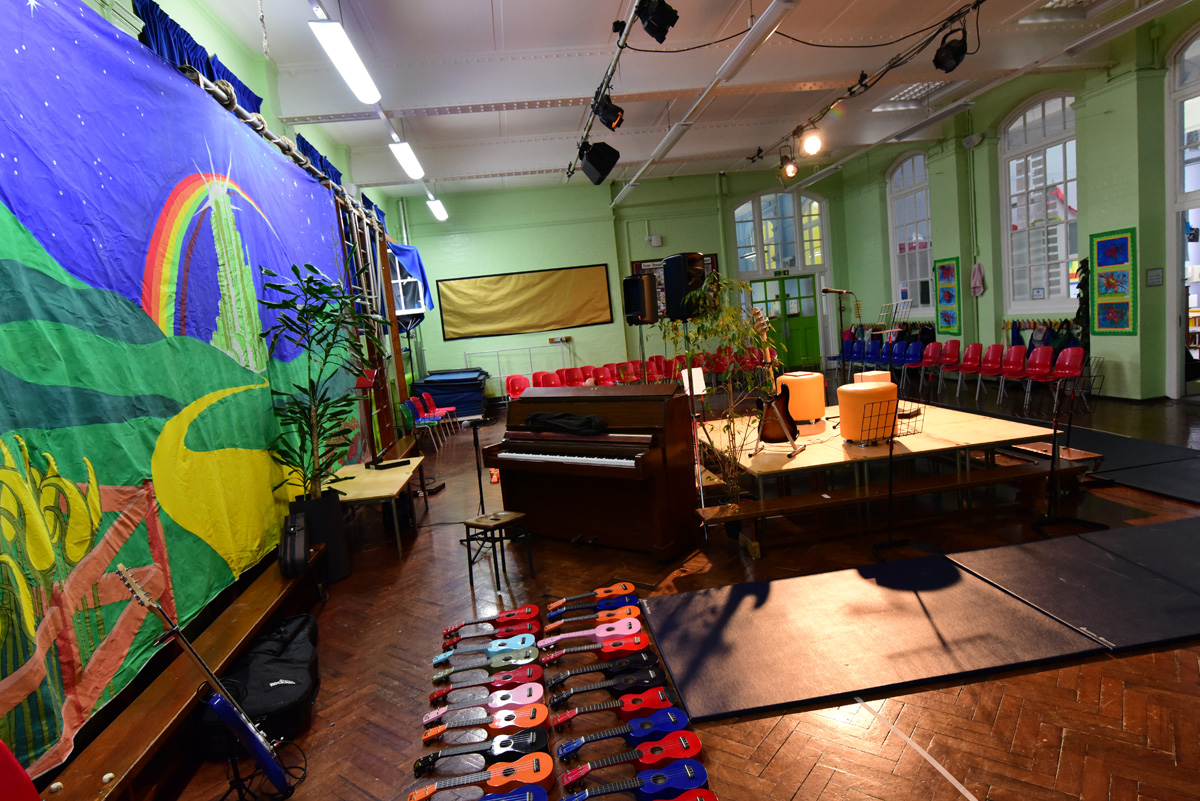
These include:
- KS1 choir
- KS2 choir
- GarageBand club
- Song writing club
- Salsa
- Art Club
- Hoopstep
- Gardening Club
- Drama Club and
- Pottery Club
The school works closely with outside agencies, as well as the local community, to give students as many opportunities as possible in the arts. Organisations with whom there are links include:
- Camden Music Hub
- Queens Crescent Community Centre
- London Symphony Orchestra
- Royal Academy of Music
- Cecil Sharpe House
- The Southbank Centre
- Razzamataz (Theatre School)
- Akademi (Dance company) and
- Love Art for Schools (company specialising in creating learning environments)
What outcomes are being explicitly targeted?
The aims of the programme are for pupils to
- develop and improve skills and knowledge of performing, composing, listening and appraising;
- c0-create new songs and new music;
- succeed as independent, enthusiastic and confident learners;
- be valued as individuals, enabling them to develop a positive self-image, self discipline and respect for others;
- belong to an inclusive learning community which challenges and enables every learner to develop aspirations for a successful future; and
- develop self-efficacy (the school refers to 'Building Learning Power' BLP). This is discussed as 'At Rhyl we are passionate about developing children's skills to become life-long learners. BLP is woven into all aspects of school life at Rhyl. BLP is built on four main principles, known as the “4Rs”: Resilience, Reciprocity, Reflectiveness and Resourcefulness. (see Rhyl School Learning and Teaching policy)
What is the context of the work?
The school is a two-form entry Primary School, part of the Camden Local Education Authority. Pupils are aged from 3 to 11. The latest (2013) Office for Standards in Education inspection report states:
- The school has an above average proportion of pupils that are supported by the pupil premium;
- The proportion of pupils supported through school action is below average. The proportion supported through school action plus or a statement of special educational needs is average;
- A well above average proportion of pupils speak English as an additional language; [and]
- A well above average proportion of pupils come from minority ethnic backgrounds.
The case study showcases different areas of music learning in the school. These include the following aspects:
- Creating new sounds – originality in improvisation and composition;
- Performing existing repertoire – intonation, dynamics, phrasing, expression, fluency; and
- Use of technology
- Self- and co-regulation: increasing self-reliance;
- Originality and creativity; and
- Cultural and spiritual development
- Interpersonal skills and relationships with others; and
- Teamwork and co-operation
Does the example fit into longer term plan or is it 'stand-alone'?
The case study aims to provide an illustration of the on-going musical life at the school.
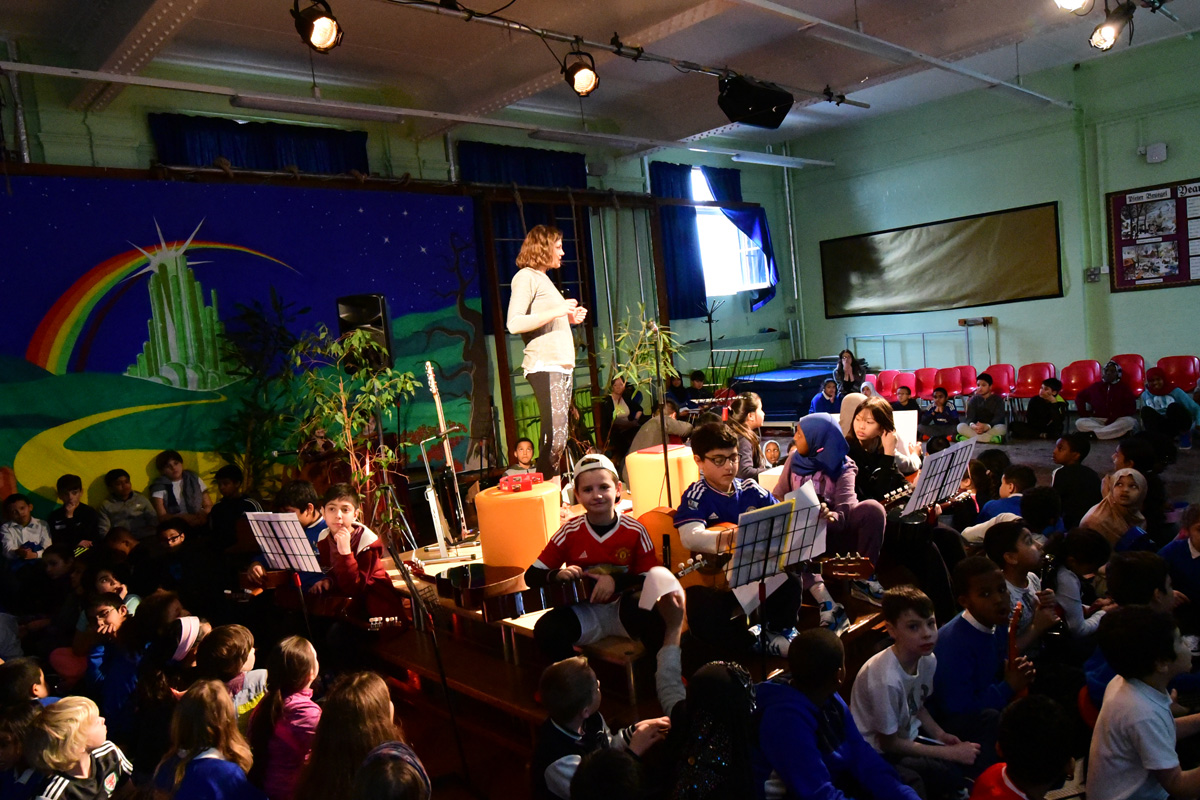
Who is leading the work?
The Assistant Head / Music Teacher oversees the Arts, teaches music and is a member of the senior leadership team. She leads on the School Improvement Leadership Team for 'expressive arts and raising aspirations.' All pupils have weekly music lessons from her, and also have the opportunity to learn a range of instruments for free and have the chance to record in the recording studio.
Any other relevant information
The schools' commitment to creativity and the arts has been recognised through the achievement of an Arts Mark Gold award.
There is a link governor role for 'Raising Aspirations and Expressive Arts'. The school uses PPG (Pupil Premium Grant for Raising Attainment and achievement of PP pupils to good progress) to provide enhanced curricular opportunities and raised aspirations for pupils; in music, this includes instrumental lessons, after school clubs and extra curricular activities.
What is the content of the work?
The Case study content provides examples from the musical learning community and includes:
- three-year-olds music and maths work with parents;
- Year 1 songwriting linked to a curriculum topic;
- Children in Key Stage 1 using an iPad for composing;
- A Year 4 whole class Ukelele session;
- Peer-to-peer teaching between pupils on how to play instruments;
- Songwriting with instrumental accompaniment;
- A school-produced Album (Rock band);
- Recording in the recording studio;
- Pupils demonstrating sound engineering techniques;
- Pupils explaining how they produce the school's radio show;
- A boys' choir, with male teachers as role models;
- An end-of-term music performance;
- Rhyl pupils taking part in a Borough-wide and Hub-led music festival at the Royal Albert Hall;
- Interviews with the head and music teacher about the ethos of the school and value of music; and
- Pupil interviews talking about music making.
What are the key features of the teaching and learning approach?
As noted above, the school has recently updated their Learning and Teaching Policy (2016) ( external link ):
At Rhyl, we encourage children to become independent and self-motivated learners and to take responsibility for their own learning. We expect staff to provide learning experiences, which will encourage children to investigate and make choices about their learning. Problem solving and investigative activities provide excellent opportunities to develop these skills. Children should be taught to find their own solutions to difficulties in their learning, such as through peer support, observation, accessing appropriate resources and asking questions...
Teaching is organised to enable pupils of all abilities to access the learning. Activities will be differentiated in order to meet the different needs and abilities within the class
How is the work being reviewed?
Regular opportunities are taken to celebrate children's achievements in music through performances, the recording of compositions, producing a school music Album, as well as participation in Borough and London-wide events.
Teachers use a variety of strategies to assess pupils within and across lessons. These include probing questioning, examining children's work, talk partners, whiteboards, quizzes, end of unit assessments, getting pupils to demonstrate and explain their thinking, pupil interviews, observations, and lesson study. Teachers provide verbal and written feedback to pupils. There is an expectation that pupils will reflect on and respond to the feedback that they are given and that regular time is built into lessons to enable this to happen effectively.
Pupils are actively engaged in this process through (i) self-assessment – enabling them to take accountability for, and ownership of their own learning, and (ii) peer assessment – encouraging them to be a learning support and resource for each other.
Reflection
What are the positive outcomes for children/young people – are they some or all of musical, social, personal, educational - how and when can they be identified?
Positive outcomes include the following:
- Pupils develop and improve skills and knowledge of performing, composing, listening and appraising;
- Pupils can c0-create new songs and new music;
- Pupils succeed as independent, enthusiastic and confident learners;
- Pupils are valued as individuals, enabling them to develop a positive self-image, self discipline and respect for others;
- Pupils belong to an inclusive learning community which challenges and enables every learner to develop aspirations for a successful future; and
- Pupils develop self-efficacy (the school refers to 'Building Learning Power')
-
BLP is identified through:
- Good quality performances in and out of school;
- Good quality compositions;
- Pupils producing their own music, independently and in groups;
- Pupils recognising that creative ideas are valued and that risk taking is encouraged;
- Pupils taking pride in their achievements and that of others; and
- The pupil 'voice' in celebrating their music making
What are the key features of teacher/leader behaviour that are enabling those positive outcomes?
Common features of the music programme in the school is evidence of the following:
- Strong advocacy from the senior leadership;
- The expressive Arts are seen to be valued and recognised as influential for whole school improvement and also the social, moral, cultural and emotional development of pupils;
- Emphasis is placed on providing opportunities to explore cross-curricular links in order to provide and enrich a curriculum, where the children are seen to be active, independent and motivated learners;
- There is an inclusive emphasis on the needs of individuals, groups and including pupils with special needs and disabilities;
- Teachers seek to provide rich and relevant musical challenge to create, recreate, listen and respond; and
- Observable progress and attainment are made clear, shared and celebrated.
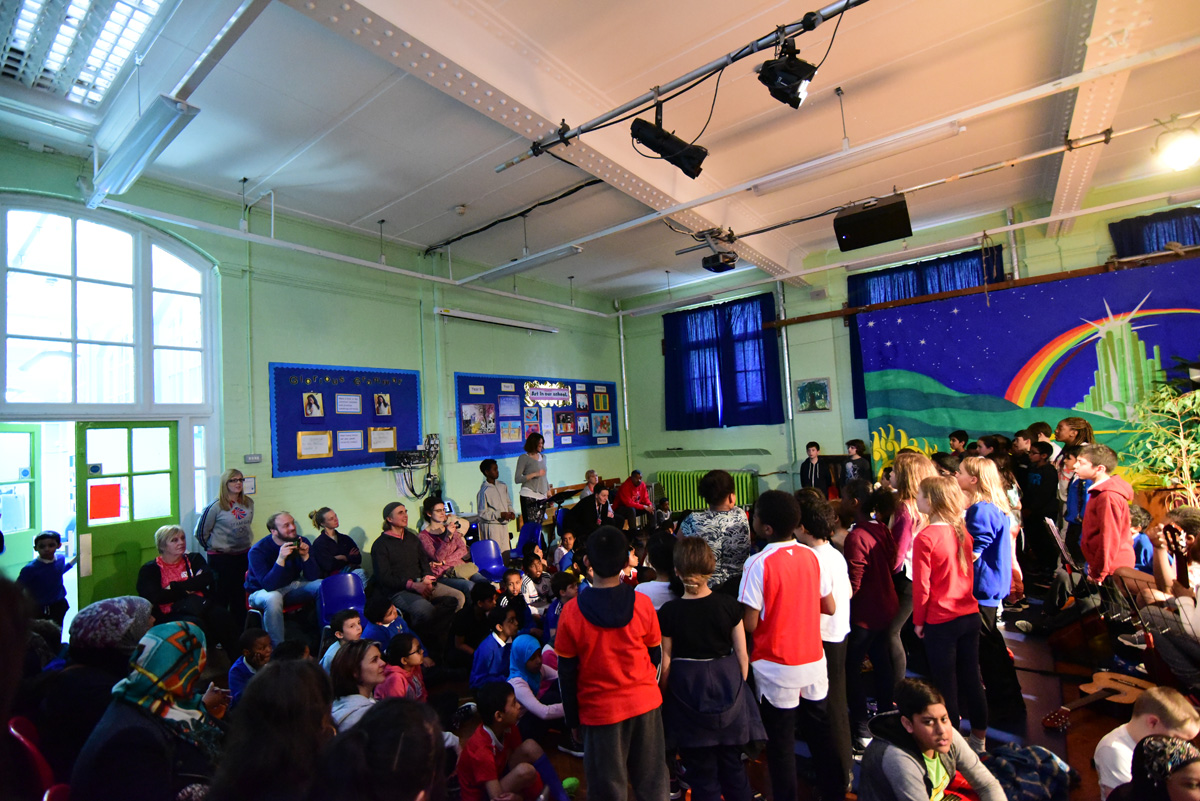
What are the key features of context, content and activities that are enabling those positive outcomes?
- Individuals know that they can make a valued individual contribution or response;
- Participants know that there will be opportunities to be spontaneous and to share ideas;
- Individuals or groups know that there are facilities for them to work individually or together between sessions;
- There are barriers to music participation;
- Individuals or groups know that there are facilities for them to work individually or together between sessions; and
- Learners can demonstrate their progress musically and verbally.
- School leaders actively build strong partnerships with local and National music education organisations.
How replicable or adaptable is it?
- The overall ethos and senior leadership advocacy can be shared and replicated.
- School music curriculum planning and approach can be replicated.
- Funding would be required to provide recording studio facilities.
